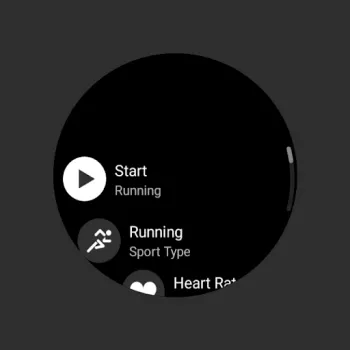Apps Home

adidas Running: Run Tracker
The Evolution and Features of Running and Fitness Trackers
In the rapidly evolving world of fitness technology, running and fitness trackers have emerged as indispensable tools for both amateur and professional athletes. The genesis of these devices can be traced back to rudimentary pedometers used decades ago, which mainly focused on counting steps. Over time, advancements in technology have led to the development of sophisticated fitness trackers that offer a plethora of features, catering to a variety of sports and fitness activities. Modern trackers are equipped with GPS to map running routes, accelerometers to measure pace and distance, altimeters to track elevation changes, and heart rate monitors to provide insights into cardiovascular health. These functionalities are not just beneficial for runners but are also essential for cyclists, swimmers, and even those engaged in high-intensity interval training (HIIT). The integration of wearable technology like smartwatches has further enhanced these devices, offering real-time data and the ability to sync with mobile applications for more comprehensive analysis and motivation. Furthermore, fitness apps like adidas Running, which you can easily Download for Android or Download for iPhone, provide users with an ultimate health and fitness community, allowing them to track over 90 sports and activities. This evolution is a testament to the growing importance of personalized data in enhancing performance and achieving specific fitness goals. As technology continues to advance, the breadth of data and personalized feedback offered by these trackers will only become more nuanced and actionable.
Harnessing Data for Improved Performance and Health
The true power of running and fitness trackers lies in their ability to harness data to improve athletic performance and overall health. These devices collect a wealth of data points, which, when analyzed correctly, can provide valuable insights into an individual's fitness regime, allowing for tailored training interventions. For instance, by tracking heart rate across different fitness activities, athletes can gauge their endurance and efficiency in various training zones. This information is crucial for runners preparing for endurance events such as marathons, as it helps in refining strategies to optimize performance. Applications like adidas Running offer features that not only track distances and calories burned but also present data on pace and cadence, essential for identifying areas of improvement. Moreover, the integration of wearable devices with apps allows for a continuous health monitoring system, offering functions like auto-pause, which stops data recording when the user stops moving, thus providing more accurate analysis. Such advancements facilitate a more personalized and informed approach to fitness, encouraging users to push beyond their limits safely. The social aspect of these apps, which allows users to connect with athletes globally, further enhances motivation by fostering a sense of community and friendly competition. With such comprehensive data at their fingertips, users can attain a new level of mindfulness in their training, fostering long-term health benefits and reaching new personal bests.
Training Plans and Customization for All Levels
One of the standout features of current fitness tracking applications is their ability to offer customizable training plans that cater to the individual's fitness level, goals, and activities. Whether a beginner runner eager to complete their first 5K, or a seasoned athlete training for a marathon, platforms like adidas Running offer tailored training solutions. These plans take into account the user's current fitness level, providing appropriate challenges and gradually increasing the intensity to help avoid injury and ensure consistent progress. For athletes training across multiple disciplines, the diverse range of activities available—running, swimming, cycling, and more—allows for cross-training opportunities that can enhance total body fitness and stave off workout monotony. Premium memberships unlock further benefits, such as access to detailed running coach consultancy and personalized race preparation strategies. These plans often incorporate periodized training cycles, designed to yield peak performance on race day. Furthermore, the use of machine learning algorithms in some advanced trackers provides dynamically adjusted plans that respond to the user's performance metrics and adherence to scheduled workouts. This adaptability ensures that the training is always aligned with the athlete’s evolving capabilities and circumstances. By implementing such well-structured and customizable plans, running and fitness trackers positively influence not only the physical health of the user but their mental resilience and confidence as well.
Integrating with Wearable Devices for Real-time Insights
The integration of running and fitness trackers with wearable technology has revolutionized the way athletes track their progress and gain insights into their performance in real-time. Devices such as smartwatches and fitness bands have made it easier for users to access their data instantly throughout the day, offering a seamless health monitoring experience. This integration is further enhanced by platforms that offer compatibility with Wear OS, allowing users to link their accounts and transform their devices into personal health monitors. With features like a statistics tile showing progress over the past six months and a launch tile for quick access to specific sports, athletes are equipped with the continuous data necessary to optimize their performance. Furthermore, these devices often feature various complications, such as starting an activity, checking weekly distances, and caching the number of weekly activities, allowing users to stay organized and on track with their goals. The multisport functionality of these devices means that athletes can easily transition between tracking running distance, swimming sessions, or cycling routes without missing a beat. This real-time access to data ensures that users can make immediate adjustments to their workout intensity, duration, and frequency, optimizing every session. Such capabilities are crucial for athletes striving to enhance their fitness levels, as they provide insights that were previously unavailable in a simple, user-friendly format.
Community and Competition: Motivation through Connectivity
The digital age of fitness has opened up new avenues for community building and fostering competition through the connective capabilities of running and fitness apps. By joining a community of over 170 million people worldwide, users of apps like adidas Running are provided with a platform to connect with fellow athletes, join sports clubs, and participate in virtual races and challenges. This sense of belonging and camaraderie significantly amplifies motivation, encouraging users to pursue their fitness goals with greater determination. The application facilitates the creation of peer challenges, enabling friendly competition that inspires participants to push their boundaries, be it through logging more miles, achieving new personal records, or simply maintaining consistency in their fitness routines. Moreover, virtual races have emerged as popular features, offering athletes an opportunity to partake in events without geographical constraints. These races, which can often span various distances from 5Ks to marathons, provide the thrill of competition and a sense of accomplishment upon completion. The integration of social sharing features allows users to broadcast their achievements, garnering support and advice from their network. This virtual ecosystem fosters an environment where fitness becomes not just a solitary pursuit, but a shared journey with like-minded individuals. By embedding competition and community into the fitness experience, these apps help ensure users remain active, engaged, and continually motivated on their path to achieving their health and fitness aspirations.
Share Your Opinion
Your Email Will Not Be Published.
All Rights Reserved © Apps Home 2025

































Abdullah Sayed
Overall it is a very good app especially if you want to train because it tracks you and even says gps location, calories burnt, top speed, etc. The...
Bryan Henderson
I have used several other fitness tracking apps. Most are really hard to work with - at least their free version. But the Adidas app is really good...
Gerald Carrow
so I was having issues with the app losing or not picking up the GPS signal but I think they fixed that because I haven't had that issue in a long ...
Sue Sheridan
I've loved this app for years...until this latest update. First, the numbers are way too small to read now. The number that was in the top middle p...
David Gonzalez
App has ,to me ; a glitch. It pauses without informing you and then you have to recover the activity time and distance plus afterwards the voice co...